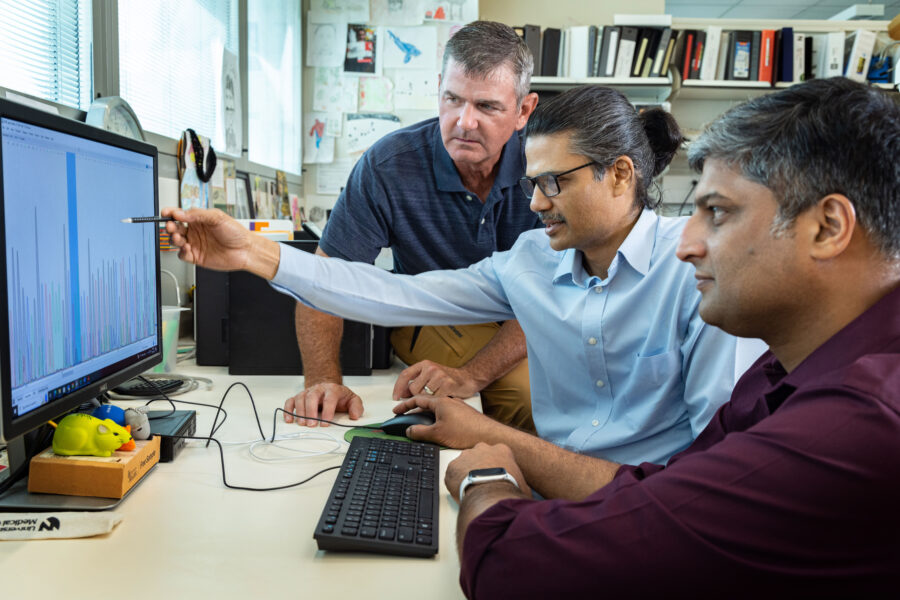Channabasavaiah Gurumurthy, PhD, director of the UNMC Mouse Genome Engineering Core Facility, and his team members Donald Harms and Rolen Quadros are wizards of Easi-CRISPR technology.
So, when former UNMC researcher Michael Green, PhD, now director of translational and laboratory research at the University of Texas MD Anderson Cancer Center, approached Dr. Gurumurthy to explore a particular gene’s role in cancer progression, the next step seemed obvious – use new Easi-CRISPR technology to generate a conditional knockout mouse model, a design that previously was unattainable through traditional CRISPR methods.
The resulting research led to a recent article published in Cancer Cell. Researchers including Drs. Green and Gurumurthy highlighted the significance of SMARCA4, a tumor suppressor, and observed that partial loss of the gene in the conditional knockout model altered cell fate decisions and increased cell production in the germinal center (GC) B cells. In short, SMARCA4 loss led to increased tumor risk and lymphoma.
The mouse model designed and created at the UNMC Mouse Genome Engineering Core was a powerful tool in dissecting cancer’s pathway in B cells.
Unlike conventional knockout models, which completely delete a gene, conditional knockouts selectively delete a gene in specific organs or time frames, offering an in-depth understanding of its roles.
“Instead of deleting the gene, conditional knockouts allow us to turn off a target gene at specific times of life or in specific tissues,” Dr. Gurumurthy said. “The conditional knockout approach offers a powerful solution to study a gene altering at the cellular level.” The gene-loss effect in the case of SMARCA4 was so strong that deletion of just one copy was enough, unlike most other genes where deletion of both copies of the gene is necessary to see the effect, he said.
“Mouse-genetics research projects require larger resources and take several years to complete, but they can result in impactful papers and help secure funding for further research,” Dr. Gurumurthy said. “Even though it takes approximately six months to create a mouse model using Easi-CRISPR, as opposed to nearly two years using traditional methods, further characterizing the newly generated models typically takes several years.”
Once established, these models serve as invaluable tools, he said, for investigating disease mechanisms and developing potential therapeutics.
Dr. Gurumurthy said the SMARCA4 study required systematic and thorough analyses of a larger cohort of mice, which took more time to breed – as much as four years.
“Some genes are special in that even the loss of one copy is going to cause a problem,” Dr. Gurumurthy said. “With SMARCA4, damage or loss can alter the pathway. Without it, other proteins that tell cells when to stop growing don’t work properly, which can lead to cancer.”
Dr. Gurumurthy values the collaborative nature of research including the role of core facilities which, equipped with expertise in gene editing and model generation, facilitate interdisciplinary collaborations and further advance research.
With Easi-CRISPR being adopted as a method of choice at laboratories worldwide, the UNMC Mouse Genome Engineering Core Facility has been established as a leader in genome editing technologies, Dr. Gurumurthy said, and his core attracts worldwide collaborations.
“Companies and institutes are investigating our technical contributions for use as gene therapy platforms for cancer and some genetic diseases,” he said. “We create models for many investigators on campus, in all fields – pediatrics, oncology, neuroscience, ophthalmology and more.”

Great job Guru and team.